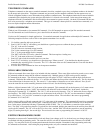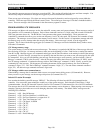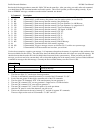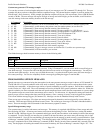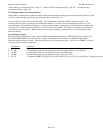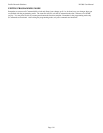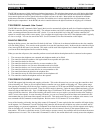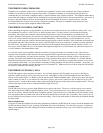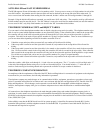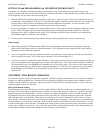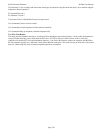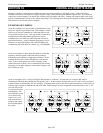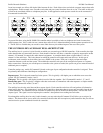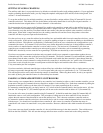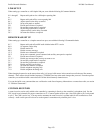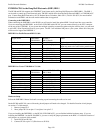
Pacific Research Solutions RI-300e User Manual
Page 117
AUTO-DIALER and LAST NUMBER REDIAL
The RI-300 supports 99 auto dial numbers and a last number re-dial. You may store as many as 16 digit numbers in each of the
auto dial locations. Any number stored in the auto dialer will not be checked by the accept and reject tables when used. To
access a stored auto dial number when sending the dial command, include * and the auto dial storage number 01 through 99.
Example: Using the default off-hook user command, you would enter *8*01 and un-key. The controller would go off-hook and
dial the number stored in auto dial slot 01. The “00” address is reserved to recall the last number dialed, but auto dial numbers
are not stored in “00”; only fully dialed numbers are stored in the “00” last number dialed address.
TELEPHONE NUMBER ACCEPT and REJECT TABLES
You can control or limit the telephone numbers that are dialed, using the accept and reject tables. The telephone number reject
table is used to control which telephone numbers are not allowed for dialing. If the controller finds a match in the accept table,
the controller will only look in the reject table positions 50 through 99 for a reject; this part of the reject table is called an
exception. This table can be used to reject specific numbers in a group if accepted numbers. There are several different ways
you can use these tables depending on which of the tables are turned off or on.
• If both the accept and reject tables are turned off, any number will be allowed for dialing.
• If the accept table is turned on and the reject table is turned off, only numbers in the accept table will be allowed for
dialing.
• If the accept table is turned on and the reject table is also turned on, the controller will look for a match in the accept table
first. If it does not find a match in the accept table, the controller will look for a match in the reject table. If the controller
finds a match in the accept table, the controller will only look in the reject table positions 50 through 99 for a reject match.
We call this an exception and can be used to reject specific numbers in a group of accepted numbers.
• If the accept table is turned off and the reject table is turned on, only numbers in the reject table will not be allowed for
dialing.
In the above tables, valid digits are 0 through 9, *, # and A for two second pause. The “*” is used as a wild card digit and a “*”
at the end of the telephone number string acts as a wild card for multiple digits. You should include a “*” at the end of all
entries to limit extra digits from being entered and to prevent the controller to accept a number it should not.
TELEPHONE COMPANY INFORMATION
In compliance with the requirements of Part 68 of the FCC Rules and Regulations for connection of equipment to the telephone
network and for your convenience, the following information is presented.
The telephone company may make changes to its communication facilities, equipment, operations or procedures, where such
action is reasonable and required in its business and is not consistent with the rules and regulations in FCC Part 68 of the FCC
Rules and Regulations. If such changes can be expected to render the RI-300 incompatible with the telephone company
facilities, the telephone company shall give its customers adequate notice to make modifications to maintain uninterrupted
service.
All connections to the telephone network must be made through standard plugs and standard telephone company jacks, or
equivalent, in such a manner as to allow for easy and immediate disconnection of the terminal equipment. Before connecting
the RI-300 to the telephone network, the telephone company must be notified for the installation of a Universal Service Order
Code (USOC) RJ11 jack.
In the unlikely event that the RI-300 should ever fail to operate properly, it should be disconnected from the RJ11 jack to
determine if the problem is with the telephone network or with the RI-300. If a problem is found with the RI-300, leave it
disconnected until repaired or replaced.



